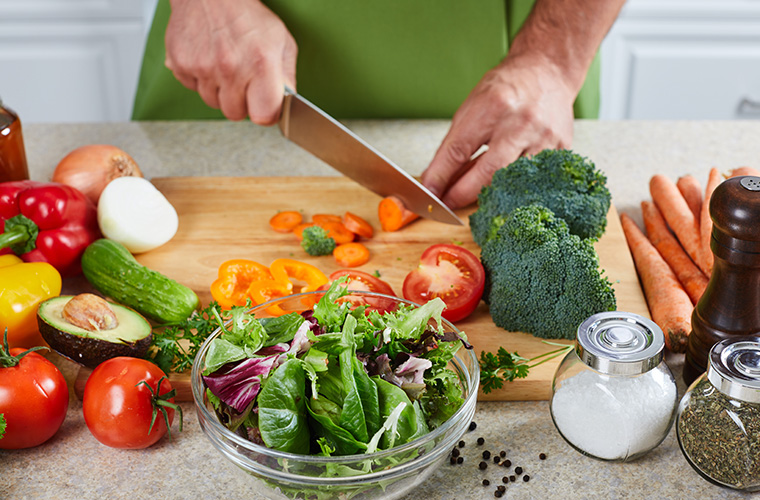Maintaining a Healthy Diet During Trying Times

As COVID-19 continues to spread across our community, many people are being advised to shelter at home. Continuous stay-at-home routines not only affect people’s overall lifestyles but also impact their daily eating habits.
“When we’re feeling anxious or nervous, it’s important to think about eating right so that we can stay healthy,” said Linda DeLorey, certified dietitian and certified diabetes educator at BayCare’s St. Anthony’s Hospital.
DeLorey, along with fellow dietitians and diabetes educators Theresa Schlott and Dianna Thomas, have seven tips for eating healthy in these trying times.
- The healthiest meals emphasize whole grains, vegetables, and fruits. Serve these items in the greatest amounts. Meat portions should be smaller — this will save money and lower unhealthy fat intake.
- Minimize grocery store trips but when you do go, make a shopping list.
- Do an inventory of fresh food, leftovers and frozen food twice a week. Eat those leftovers the next day to be safe and save money.
- Make a plan to include fruits and vegetables in your daily diet with a target of at least four servings each day.
- Consider your fresh food more “valuable” and be sure to enjoy it before it goes bad.
- Be open to trying different foods together such as strawberries and cooked asparagus with your tuna sandwich.
- Buy bags of frozen vegetables (without a cream/butter sauce) and frozen fruit as these are low in sodium and will keep a long time.
When you go shopping, stock up on nutrition-packed foods that will stay fresh for a week or longer.
- Breads, Starches — Instant oats, corn tortillas, whole grain English muffins, bagels, breads, wraps and frozen whole wheat waffles.
- Fruits — Sturdy fresh fruit (apples, citrus), dried, plain, frozen and canned in juice or water.
- Vegetables — Sturdy fresh vegetables (celery, broccoli, onions, potatoes), plain frozen, low sodium canned and sun-dried.
- Sauces — Tomato pasta sauce and salsa.
- Soups and Broths — Canned, frozen and shelf-stable cartons.
- Milk — Fresh, canned and shelf-stable packages.
- Eggs — Fresh eggs and egg whites in cartons.
- Cheese — Sliced, cubed, shredded, crumbled and grated hard cheese.
- Beans/Legumes — Canned beans (black beans, chickpeas) and dry beans.
- Nuts and Seeds — Bagged, canned and nut butters
- Chicken — Frozen or canned.
- Seafood — Frozen ready-to-cook fish fillets, frozen shrimp, canned tuna, salmon and sardines.
- Beef — Pre-made frozen lean ground patties or meatballs.
- Flavorings — Dried herbs and spices, vinegars, mustard, hot/steak sauces, lemon/lime juice, light dressings, honey and Greek yogurt.


